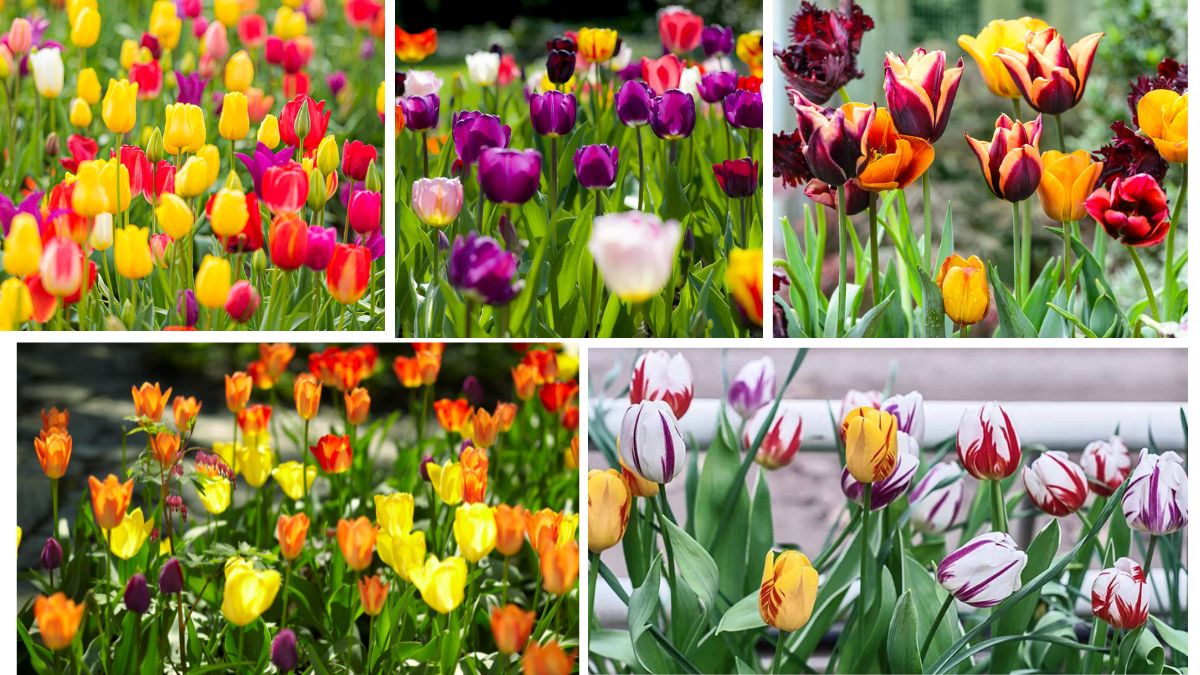There’s something truly magical about tulips. As one of the first flowers to bloom in spring, tulips bring color, elegance, and charm to any garden landscape. Their perfectly symmetrical petals and dazzling variety of hues make them a favorite among gardeners and flower lovers alike. In this comprehensive guide titled “Spring Magic: Tips for Growing Tulips,” we’ll explore everything you need to know to grow healthy, vibrant tulips—from choosing the right bulbs and soil to seasonal care and display ideas.
Introduction: The Allure of Tulips in Spring

Tulips (genus Tulipa) are perennial bulbous plants native to Central Asia and widely cultivated across Europe, particularly in the Netherlands, which is now known as the tulip capital of the world. These flowers are synonymous with spring, symbolizing renewal, love, and hope.
With over 3,000 registered varieties, tulips come in nearly every color imaginable—crimson reds, snow whites, sunny yellows, purples, and even multi-colored blends. Their simple yet sophisticated form makes them suitable for formal gardens, naturalized meadows, and indoor floral arrangements.
1. Selecting the Right Site: Light and Location
Tulips thrive in sunny locations with well-drained soil. Choosing the correct site is the first step to a successful tulip display.
Tips:
- Sunlight: Ensure at least 6 hours of direct sunlight per day.
- Shelter: Choose a location protected from strong winds that may damage the tall stems.
- Drainage: Avoid areas where water tends to pool—tulips hate soggy soil.
Why It Matters: Adequate light and drainage ensure that tulip bulbs develop strong roots and flower buds, resulting in tall, vibrant blooms.
2. Picking the Best Tulip Bulbs
Healthy bulbs are the foundation of spring magic.
Tips for Choosing Bulbs:
- Size: Bigger bulbs generally produce bigger and better flowers.
- Firmness: Select bulbs that are firm and heavy, not mushy or shriveled.
- No Mold or Damage: Avoid any with signs of rot or injury.
When to Buy: Purchase bulbs in early autumn for the best selection, and plant them before the ground freezes.
3. Understanding Tulip Varieties
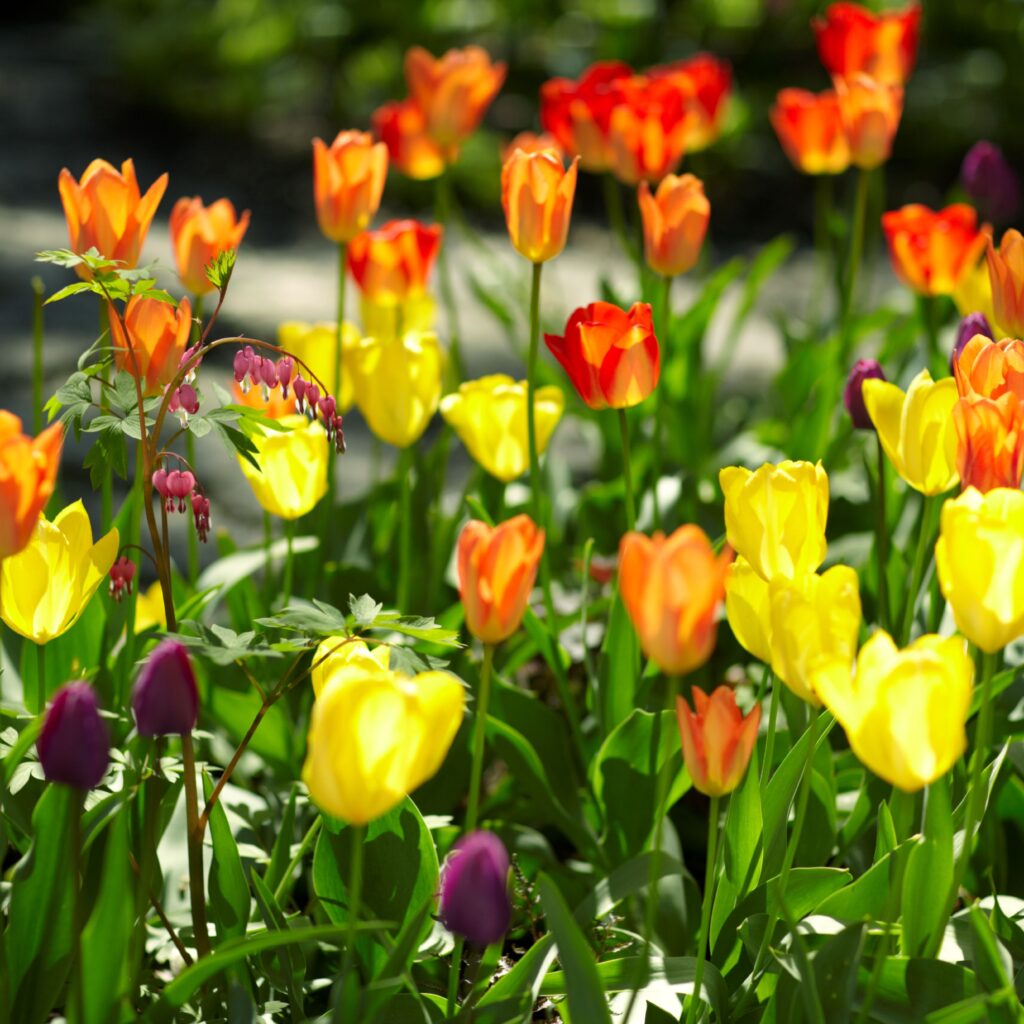
Tulips are classified into 15 groups, each with unique characteristics. Choosing the right variety enhances garden diversity and bloom timing.
Popular Tulip Types:
- Single Early Tulips: Compact and bloom early in the season.
- Double Early: Fuller, peony-like flowers in spring.
- Darwin Hybrid: Large blooms, great for perennial displays.
- Triumph Tulips: Strong stems, good for windier areas.
- Parrot Tulips: Ruffled, exotic petals—perfect for a statement.
- Fringed Tulips: Petals edged with delicate fringes.
Pro Tip: Mix varieties for a staggered blooming period and a dynamic garden look from early to late spring.
4. Preparing the Soil for Planting
Tulips perform best in fertile, loose, and well-drained soil.
Soil Preparation Tips:
- pH Level: Slightly acidic to neutral (6.0–7.0).
- Improve Drainage: Mix in sand or perlite if the soil is heavy or clay-rich.
- Enrich Soil: Add compost, bone meal, or bulb fertilizer before planting.
Why It Helps: Prepping the soil gives bulbs a nutrient-rich start, ensuring they store enough energy to produce strong, colorful blooms.
5. Planting Tulip Bulbs: Timing and Technique
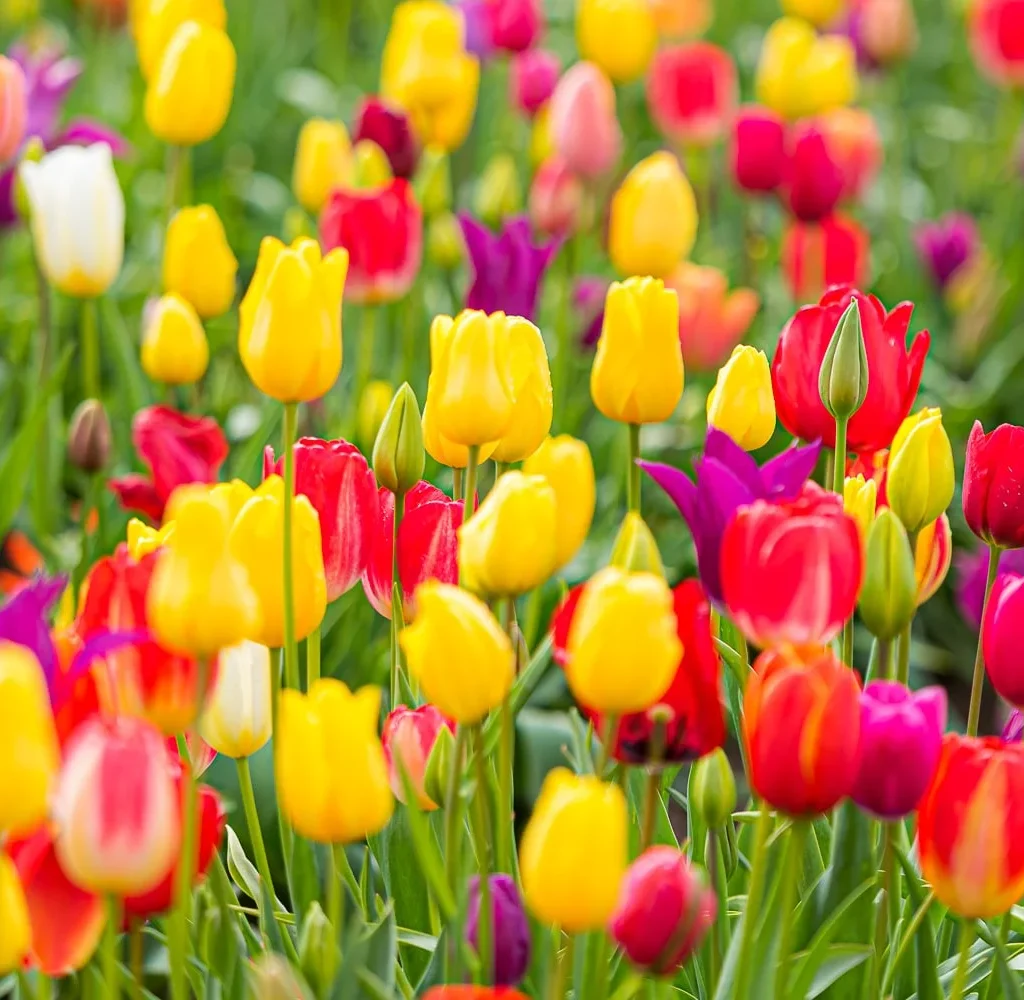
Best Time to Plant: Fall, 6–8 weeks before the ground freezes.
Steps to Plant Tulips:
- Depth: Plant bulbs 6 to 8 inches deep (3 times the bulb’s height).
- Spacing: Keep bulbs 4–6 inches apart.
- Pointy End Up: Always plant with the pointed tip facing up.
- Cover and Water: Cover with soil and water lightly after planting to settle the soil.
Mulching Tip: Add a 2-inch mulch layer to protect bulbs from extreme winter cold and prevent weeds.
6. Watering and Fertilizing
Tulips require minimal watering once established, but early hydration is critical.
Watering Tips:
- After Planting: Water once to settle bulbs.
- Spring Growth: Water only if rainfall is insufficient; avoid overwatering.
- Dormant Period: Do not water after foliage dies back.
Fertilizing Tips:
- Use low-nitrogen fertilizer (e.g., 5-10-10 or 10-15-10).
- Apply twice: Once at planting and once when shoots appear in spring.
Too much nitrogen encourages leaf growth at the expense of flowers, so stick to balanced formulations.
7. Tulip Troubles: Pests and Diseases
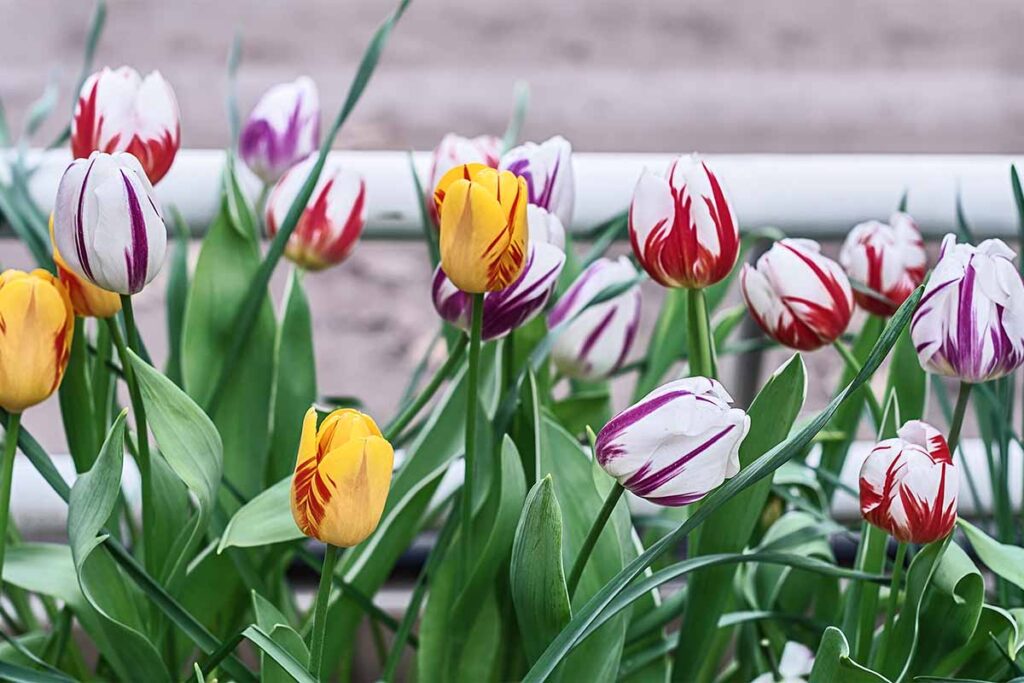
While tulips are hardy, they’re vulnerable to several pests and fungal diseases.
Common Issues:
- Aphids: Suck plant sap and may spread viruses.
- Slugs & Snails: Eat young shoots and petals.
- Gray Mold (Botrytis): Causes soft, rotten spots on flowers and stems.
- Tulip Fire (Botrytis tulipae): Fungal disease causing spotted leaves and distorted blooms.
Prevention Tips:
- Rotate planting locations yearly.
- Avoid overhead watering.
- Use neem oil or insecticidal soap to treat pests.
- Remove and destroy infected plants immediately.
8. Post-Bloom Care: What to Do After Flowering
Many gardeners make the mistake of digging up or cutting back tulips too early.
Post-Bloom Tips:
- Deadhead spent flowers to stop seed production.
- Let foliage die back naturally—this allows bulbs to store energy for next year.
- Remove leaves only when they yellow and dry completely.
If you want to lift and store bulbs, wait until the leaves are fully dead, then dry and store in a cool, dark place until fall.
9. Growing Tulips in Pots and Containers
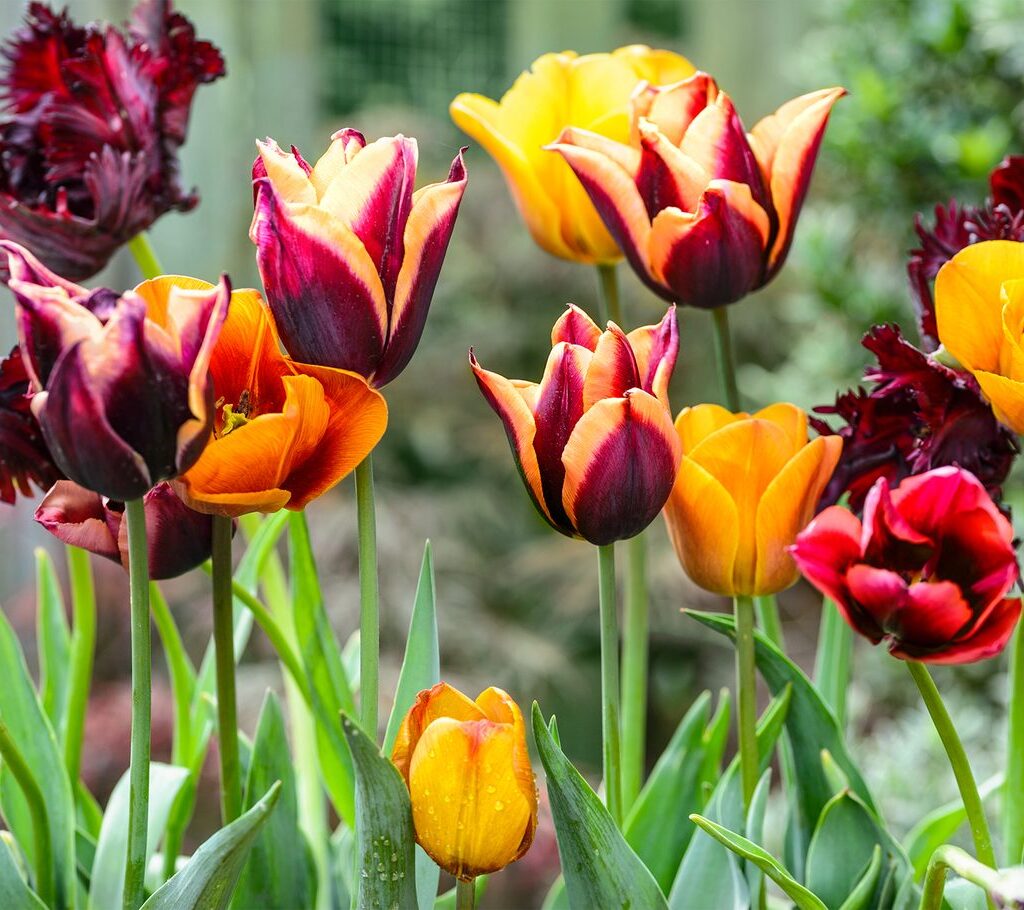
Tulips are also ideal for patios, balconies, and small spaces when grown in containers.
Container Growing Tips:
- Use a 12-inch deep pot with drainage holes.
- Fill with a mix of potting soil and sand for good drainage.
- Plant as you would in the ground—pointed end up, 6–8 inches deep.
- Overwinter the pots in a cool place (garage or unheated shed).
Bonus: Bring potted tulips indoors during spring for a fresh, fragrant centerpiece!
10. Creative Display and Landscaping Ideas
Tulips shine when thoughtfully arranged.
Design Tips:
- Color Blocking: Plant large sections of one color for visual impact.
- Layering: Combine early, mid, and late-season varieties for continuous bloom.
- Companion Plants: Pair tulips with daffodils, hyacinths, or pansies for a spring show.
Naturalizing Tip: Plant tulip bulbs in drifts or clusters in lawns or woodland gardens for a more natural look.
Conclusion: Bring Spring Magic to Life
Tulips are the ultimate symbol of spring magic. Their graceful form and dazzling palette uplift every garden they grace. By selecting healthy bulbs, preparing your soil well, planting at the right time, and providing smart care throughout the seasons, you can enjoy a dazzling tulip display year after year.
Whether planted in neat rows, wild clusters, or stylish pots, tulips never fail to enchant. They reward your care with a burst of joyful color at the very moment the earth reawakens.
